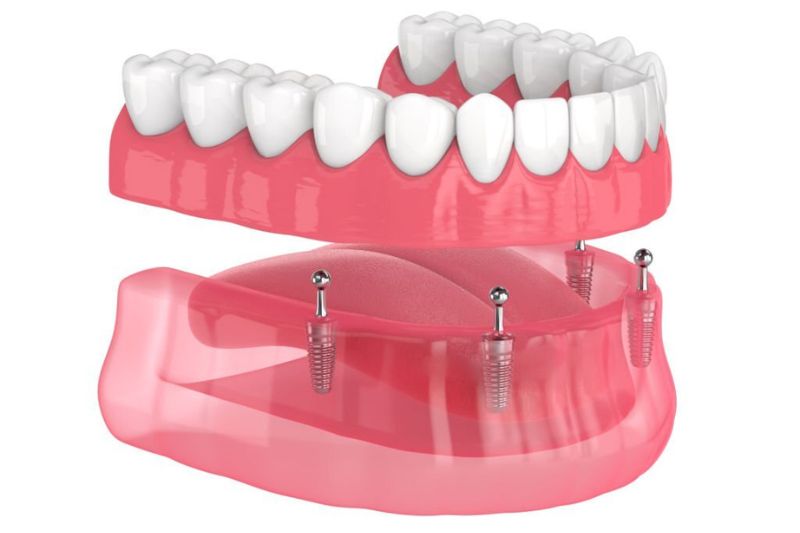Also called a complete denture, this appliance replaces an entire arch of missing teeth. A full denture rests atop your gums and relies on your palate (the roof of your mouth) or lower jawbone ridge for support. You may need to use denture adhesive (a special type of glue) to keep your appliance firmly in place. Full dentures are likely what come to mind when you think about traditional dentures. They consist of artificial teeth and a gum-coloured base. People who wear dentures usually take them out at night to clean them and give their gums a rest.


If you’re missing several or most of your teeth in one or both jaws, partial dentures may be an option. Partial dentures are similar to full dentures, as they also rely on your gums and underlying bone for support. But partial dentures also have special clasps that hook around your remaining natural teeth, providing additional stability.
Sometimes people need tooth extractions before they can wear dentures. An immediate denture is a device you wear right after extractions.
In some cases, immediate dentures are temporary appliances. Once you’ve healed, your dentist will replace them with your final dentures. In other cases, you might be able to wear your final denture immediately after surgery.


Unlike other types of dentures, implant-supported dentures (also called permanent dentures or hybrid dentures) are non-removable. They don’t snap in and out, and only your dentist can remove them.
Dentists recommend implant-supported dentures for people who don’t want removable oral appliances. The downside of a non-removable denture is that it requires more thorough daily cleaning, including flossing underneath your denture.